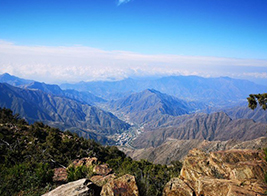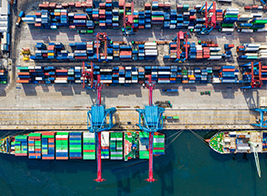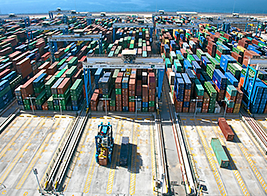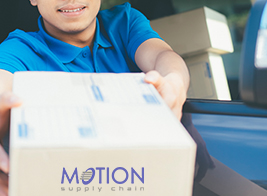November 12, 2019
Saudi ambassador to Britain calls on tourists from around the world to visit the Kingdom
Prince Khalid bin Bandar bin Sultan was speaking at the “The Next Big Destination” international roadshow hosted by Saudia Airlines in London.
Ambassador’s comments came after Saudi Arabia launched a new tourist visa scheme.
LONDON: Tourists from around the world “are welcome anytime” to visit Saudi Arabia, the Kingdom’s ambassador to the UK said Thursday at an event to promote the country as a major tourist destination.
“We are incredibly excited to open up our home to the world, and we look forward to welcoming many tourists from every part of it to Saudi Arabia,” Prince Khalid bin Bandar bin Sultan said.
Speaking to Arab News at “The Next Big Destination” international roadshow hosted by Saudia Airlines in London, he hoped hoped tourists from around the globe would visit “the place that we love so much.”
LEARN MORE
November 05, 2019
Digitalization of Logistics and Supply Chains Isn’t The Future; It’s Already Here!
Mark McArthur, North America at Alpega Group
What Is Your Number-One Takeaway From Gartner 2019?
Organizations that don’t embrace current and emerging technologies across their transportation, warehousing and supply chain operations won’t be able to compete. Through technology and automation, digitalization can reduce inefficiencies; provide shared data sets on which to make better decisions; permit end-to-end supply chains by connecting trading partners, and provide visibility throughout the execution of all supply chain functions.
What Are The Key Market Trends, From Your Perspective?
Sustainability. Companies are developing sustainability goals from both the corporate perspective (i.e., reducing dependency on natural resources and eliminating waste) and also from a supply chain perspective. They are actively addressing concerns for the planet and its people, and acknowledge this responsibility alongside profitability. Everyone must play a part in making a positive contribution to the world we live in.
How Is Your Organization Reacting To These Market Trends?
The products or rather 'solutions' we bring to market are true multi-tenant, cloud-based solutions that enable and foster collaboration across logistics and supply chain operations. One of the products we offer is a returnable packaging management solution that provides end-to-end visibility to companies’ returnable, reusable transport packaging movements, inventories, and costs.
READ MORE
October 15, 2019
Supply chains are becoming increasingly globalized and more complex.
Raw materials and products travel across many geographical locations and pass through multiple suppliers, manufacturers, distributors, carriers and service providers.
Often, the supply chain is unaware of how many trading partners are really involved. In theory, organizations should know all parties in their supply chain network (within the broader business ecosystem) and trust them — but this is far from today’s reality. Blockchain technologies, as an example, could be an answer to address this problem across three areas — counterfeiting, visibility/traceability and efficiency play.
Innovative technologies, such as blockchain and AI/machine learning, can potentially and significantly disrupt existing supply chain operating models.
Although supply-chain-related blockchain initiatives are nascent, with solutions in early stages of development, interest has accelerated significantly during the past year, making blockchain a top trend for supply chain leaders to watch.
READ MORE
October 01, 2019
Saudi heritage museum opens at Scitech
The Abdullah bin Mohammed Ababtain Heritage Museum, in cooperation with the Sultan bin Abdul Aziz Center for Science and Technology (Scitech), launched a heritage exhibition in celebration of Saudi National Day.
The event was held under the patronage of Dr. Sahl Abdul Jawad, president of King Fahd University of Petroleum and Minerals.
The museum captures life in the Eastern Province, starting with a maritime area that emulates sea life and diving. The museum also boasts a gems section, a wing displaying photos of royal visits to the Eastern Province, a section capturing important historical sites that reflect the past of the province and its connection to the present and a display on media commentary on the province throughout history.
LEARN MORE
The Abdullah bin Mohammed Ababtain Heritage Museum, in cooperation with the Sultan bin Abdul Aziz Center for Science and Technology (Scitech), launched a heritage exhibition in celebration of Saudi National Day.
The event was held under the patronage of Dr. Sahl Abdul Jawad, president of King Fahd University of Petroleum and Minerals.
The museum captures life in the Eastern Province, starting with a maritime area that emulates sea life and diving. The museum also boasts a gems section, a wing displaying photos of royal visits to the Eastern Province, a section capturing important historical sites that reflect the past of the province and its connection to the present and a display on media commentary on the province throughout history.
LEARN MORE
September 23, 2019
New Plant in Scotland to Generate Heating from Wastewater
Public buildings in Stirling, Scotland, will be kept warm by heat recovered from a nearby sewage works
A new £6m energy hub, due to open this month, will provide heating generated from wastewater and is the first of its kind in the UK. The Stirling District Heat Network will deliver low-carbon heat to public buildings, including a leisure centre and football stadium.
Organisations such as Zero Waste Scotland and Volunteer Scotland will also benefit. Scottish Water estimates that the project will save 381 tonnes of carbon a year, equal to 1.5m miles driven in a petrol car.
LEARN MORE
September 15, 2019
China-US trade war impacts UAE construction and retail supply chains
As the US-China trade war escalates, the impact is beginning to affect the UAE and GCC marketplace, with the supply chain the first source of concern for retailers and local manufacturers.
Chinese manufacturers and suppliers are looking to alternate markets to export their goods, and the UAE is a favoured destination.
These goods are flowing in at prices far lower than existing market levels and hurting trader/supplier margins, according to traders who spoke to Gulf News.
LEARN MORE
September 01, 2019
How to Tackle Last-Mile Delivery Challenges Using ‘The Best’ Technology
When the latest technology tells you how to logistically deliver to a location faster while minimizing fuel costs, it isn’t taking over your drivers job; it’s simply improving it.
With unidentifiable addresses, infrastructural adversities, and remote locations, last-mile logistics translate to 28% of a product’s transportation expense.
According to IMRG, it’s costing retailers, couriers, and consumers a collective $2 billion a year.
Since the last leg of delivery seems to be the only face time a consumer gets with company representatives, these first impressions will determine a consumer’s future interaction with the firm. Hence, last-mile delivery expenses may not be avoidable but can be reduced to a fraction of that value if tackled in the right manner.
Why Human Intuition Is Not Good Enough?
Before we start pointing fingers at Mr. Delivery Guy, understand that he was simply unequipped with the right arsenal to take on last-mile deliveries.
To incorporate a free-flowing system of delivery route optimization, it might seem like a good idea to rely on human intelligence and local experience to provide a supportive base for last-mile deliveries.
This can be debunked on two counts- first, no matter how experienced an employee may be in terms of local logistics, not every employee matches up to a set standard.
So, How Can Technology Help?
Contrary to popular belief, advanced technology does not resonate with flying cars and time travel. We’re talking about what’s here and now- Artificial Intelligence which isn’t just technology-driven, but human inclusive as well.
When technology tells you how to deliver to a location faster while minimizing fuel costs, it isn’t taking over your job; it’s simply improving it.
LEARN MOREWhen the latest technology tells you how to logistically deliver to a location faster while minimizing fuel costs, it isn’t taking over your drivers job; it’s simply improving it.
With unidentifiable addresses, infrastructural adversities, and remote locations, last-mile logistics translate to 28% of a product’s transportation expense.
According to IMRG, it’s costing retailers, couriers, and consumers a collective $2 billion a year.
Since the last leg of delivery seems to be the only face time a consumer gets with company representatives, these first impressions will determine a consumer’s future interaction with the firm. Hence, last-mile delivery expenses may not be avoidable but can be reduced to a fraction of that value if tackled in the right manner.
Why Human Intuition Is Not Good Enough?
Before we start pointing fingers at Mr. Delivery Guy, understand that he was simply unequipped with the right arsenal to take on last-mile deliveries.
To incorporate a free-flowing system of delivery route optimization, it might seem like a good idea to rely on human intelligence and local experience to provide a supportive base for last-mile deliveries.
This can be debunked on two counts- first, no matter how experienced an employee may be in terms of local logistics, not every employee matches up to a set standard.
So, How Can Technology Help?
Contrary to popular belief, advanced technology does not resonate with flying cars and time travel. We’re talking about what’s here and now- Artificial Intelligence which isn’t just technology-driven, but human inclusive as well.
When technology tells you how to deliver to a location faster while minimizing fuel costs, it isn’t taking over your job; it’s simply improving it.
LEARN MORE










